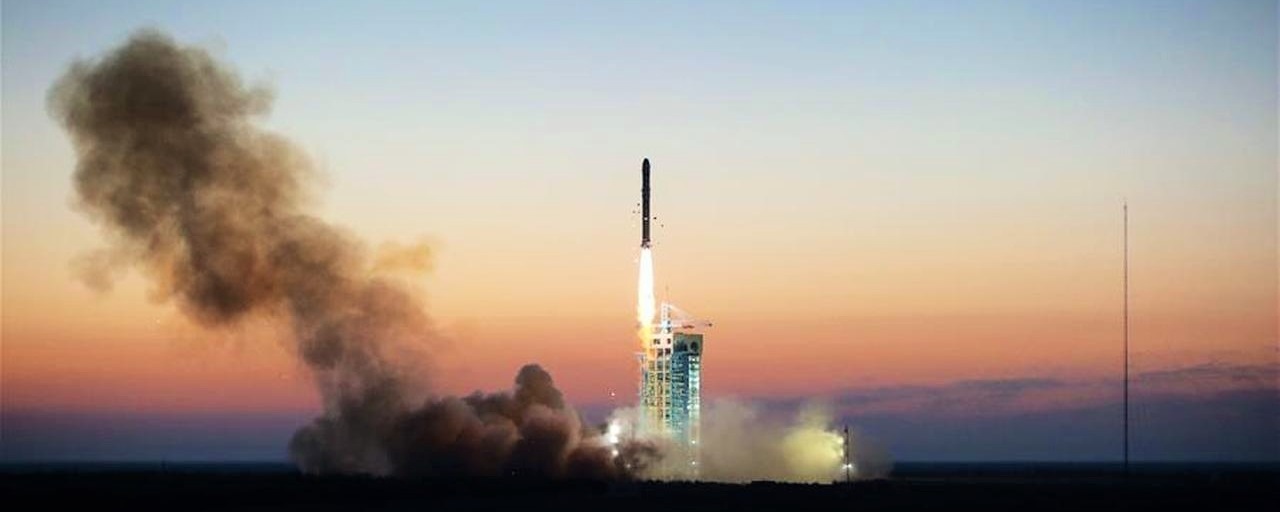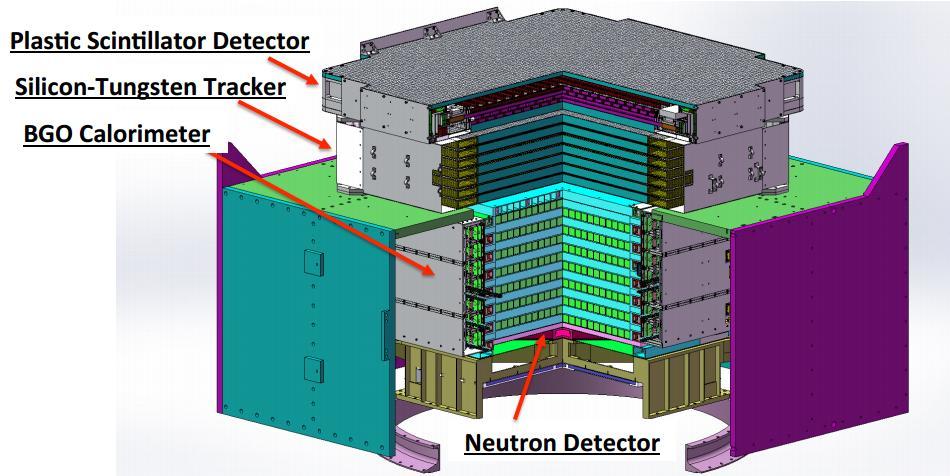China successfully launched a dark matter search satellite probe

Launching the Great March-2D rocket
China was able to successfully launch its first probe to study dark matter on Thursday, December 17th. The satellite, called the ICHTM ( Dark Matter Particle Explorer / DAMPE ), launched with the help of the Great March-2D rocket (original Long March 2D) at 00:12 GMT. The launch was made from the site number 4 of the Chinese spaceport Jiuquan, located northwest of Gansu province.
About an hour after the launch, Chinese media confirmed the success of the mission, noting that the spacecraft reached its intended solar-synchronous orbit at an altitude of 500 km, located at an angle of 97.4 degrees. Successful entry into orbit has also been confirmed by the American Center for Joint Space Operations .
After launch, Great Crusade-2D began a short-term vertical take-off, lasting just a few seconds, and then headed south to the intended orbit. The first stage worked about 3 minutes before separation. And then the second stage started, with the help of which the remaining flight to orbit was controlled.
ICHTM, named "Wukong" (orig. Wukong) in honor of the Monkey King of Chinese folklore, weighs about 1900 kilograms, consumes about 400 watts of energy and is designed to work for three years, although scientists hope that he can remain in service and all five. It will be managed by employees of the Chinese Academy of Sciences .

Satellite diagram
The HMI is designed to detect electrons and photons with unprecedented energy resolution to detect possible traces of dark matter. It has the widest spectrum for observation and is able to detect any dark matter in the world.
The spacecraft will also measure the flow of nuclear flows, which may lead to new ideas about the origin and propagation of high-energy cosmic rays. Thanks to its excellent photon detection capabilities, the mission of the ICHM is great for making new discoveries in astronomy of high-energy cosmic rays.
Dark matter is a hypothetical type of matter that cannot be detected using telescopes, but is the most common matter in the universe. Onya is one of the main mysteries of physics. Scientists substantiate the existence of this matter based on the law of universal gravitation, but they have not yet been able to discover it.
“It's like looking for a 'son' of dark matter - if you cannot find a father, you go to your son and try to find out at least a little about the properties of his father," said Chang Jin, one of the leading scientists on the ICTI project.
This mission is one of five included in the strategic program for space exploration, approved by the Chinese Academy of Sciences in 2011.

Artistic rendering of the ICHM satellite
China developed and assembled the probe in collaboration with the Swiss University of Geneva and the Italian universities in Bari, Lecce and Perugia.
“China is already a major player in space. However, in order to make more progress, we need to launch more scientific satellites, ”said Wu Ji, director of the National Space Science Center.
The Great Campaign 2D, used for this mission, is a two-stage rocket developed at the Shanghai Academy of Space Technology. Basically, this rocket is used to launch satellites into low Earth orbit. It has a total height of 41.15 meters. The first stage is 27.9 meters long and 3.35 meters in diameter, equipped with four YF-21C engines. The upper stage has a length of 10.9 meters and is equipped with a single engine YF-24C.
The rocket was first launched on August 9, 1992, bringing into orbit the reusable satellite Fanhui Shi Weixing (orig. Fanhui Shei Weixing). The Great Campaign 2D has 26 successful launches.
This launch was a 234 Chinese orbital launch and 221 missions carried out with the help of carriers of the Great March class. It was also 82 orbital take-off from the Jiuquan cosmodrome and 18 orbital launch for China this year. Another launch is planned before the end of this year. Next year, China plans to send the spacecraft Gaofen-4 (orig. Gaofen 4) into space. Specific launch dates will be announced later.
Via spaceflightinsider
